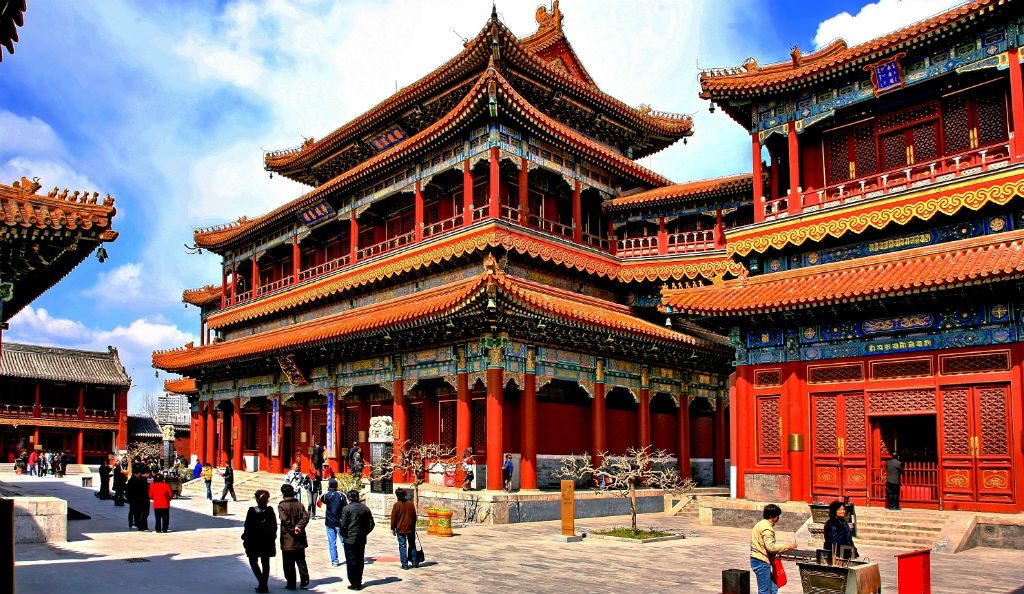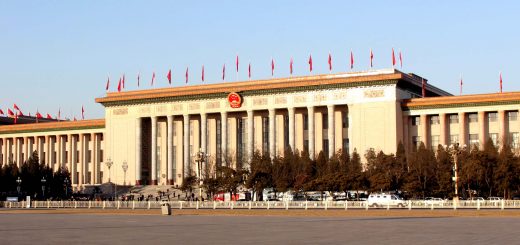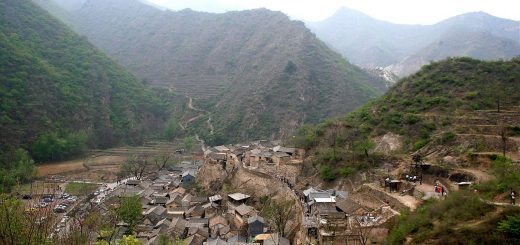Yonghe Lama Temple
The Lama Temple is the largest Buddhist temple of the Gelugpa (Huangjiao) in Tibetan Buddhism. It was once the residence of the Emperor of the Qing Emperor (the Emperor Yongzheng) and the birthplace of the Emperor Qianlong. Later, it was changed to the temple. There are many precious ancient buildings and cultural relics in the temple, which are worth visiting.

Han-Tibet combination
One of the characteristics of the Lama Temple as a temple is that it is a fusion of Buddhism Han Chuan and Tibetan Buddhism. When you visit the Lama Temple, you can see the Han Buddhism’s big belly Maitreya in the Temple of Heavenly King, and in the Falun Hall. Also, see the bronze statue of the Tsongkhapa master of Tibetan Buddhism. In addition, the four kings in the Temple of Heaven and the arrangement of the “Three Buddhas” in the Hall of the Lama Temple are also different from those in the Han Temple.
Precious cultural relics
The Lama Temple also houses treasures from the local government of the Qing Dynasty dedicated to the royal family and the temple (you can see some of the collections in the two cultural relics exhibition halls of Panchen Building and Jietai Building). There are many Buddha statues, Thangka and a large number of precious cultural relics in the temples. Among them, five hundred Arhats carved by rosewood, the big Buddha of Jinsangmu and the white sandalwood of 18 meters high are the three masters of the wood carving craft of the Lama Temple. The Buddha in Wanfu Pavilion is the most famous, 18 meters above the ground, buried 8 meters underground, and carved from white sandalwood. The tree is native to Nepal and was purchased by the Seventh Dalai Lama and later dedicated to the Emperor Qianlong.

Tour route
The main building complex of the Lama Temple consists of the archway, Zhaotaimen (Shanmen), Tianwang Hall, Lama Temple Grand Palace, Yongyou Temple, Falun Hall, Wanfu Pavilion, Panchen Building and Jietai Building. Four school halls and other buildings. You can walk along the central axis of the Lama Temple. The roads in the scenic area are not complicated and it is easy to find the temples.
Buddhist activities
The Lama Temple is also a major ritual activity every year on the first, first, fifteenth, and thirteenth morning of the lunar calendar. During the ruling period, the number of tourists and believers will increase a lot. For detailed Buddhist activities, please visit the official website: http://www.yonghegong.cn.
Attractions nearby
Lama Temple and Guozijian are separated by a road, very close; from the Lama Temple to the north about 200 meters to go to Ditan Park; about 15 minutes to the east, Dongzhimen Street, also known as ” 簋街 “, here is a Beijing restaurant street.
Special Notes
1. Every year on the New Year’s Day, there are many tourists who come to burn the incense. At this time, the Lama Temple is crowded. It is recommended to avoid going to play at this time. 2. It is forbidden to take photos in the temples of the Lama Temple.
Map
Grand Mercure Beijing Dongcheng
Bei Jing Dong Fang Mei Jue Jiu Dian, Dongcheng Qu, Beijing Shi, China, 100007
12 Yonghegong St, Dongcheng Qu, China, 100007
Details
- CN Name: 雍和宫
- Website: http://www.yonghegong.cn/
- EN Address: No.12, Yonghe Gong street
- CN Address: 北京市东城区雍和宫大街12号 邮政编码: 100007
- Nearby Hotel Pick: Grand Mercure Beijing Dongcheng
- Getting There: Take Subway Line 2 or 5 to Yonghe Temple Station (yonghegong). Bus: 13/44/116/117/807/
More things to do by type
More things to do by location
More things to do by nearby Subway Station
- Beigongmen Station
- Beihai North Station
- Beijing Station
- Beijing Zoo Station
- Changying Station
- Chaoyangmen Station
- Chongwenmen station
- Dabaotai Station
- Dawang Road Station
- Dengshikou station
- Dongdaqiao Station
- Dongsishitiao Station
- Dongzhimen Station
- East Gate of Peking University Station
- Fuxingmen station
- Gongzhufen Station
- Gucheng Station
- Guomao Station
- Haidian Huangzhuang Station
- Jinsong Station
- Jishuitan station
- Liangmaqiao Station
- Life Science Park Station
- Liudaokou Station
- Liuliqiao East Station
- Majiapu Station
- Military Museum Station
- Nanlishi Road Station
- Nanlouzizhuang Station
- National Library Station
- Olympic Park Station
- Olympic Sports Center station
- Panjiayuan Station
- Pinganli Station
- Qianmen station
- Qingnian Road Station
- Renmin University Station
- Shichahai Station
- Shuangjing Station
- Taoranting Station
- Tiananmen East Station
- Tiantan East Gate Station
- Tiantandongmen station
- Tian’anmen East station
- Tuanjiehu Station
- Wangfujing station
- Wangjing South Station
- Xidan station
- Xizhimen Station
- Xuanwumen Station
- Yonghe Temple station
- Yong’anli station
- Yuanmingyuan Station.
- Zhiwuyuan Station
- Zhongguancun Station


